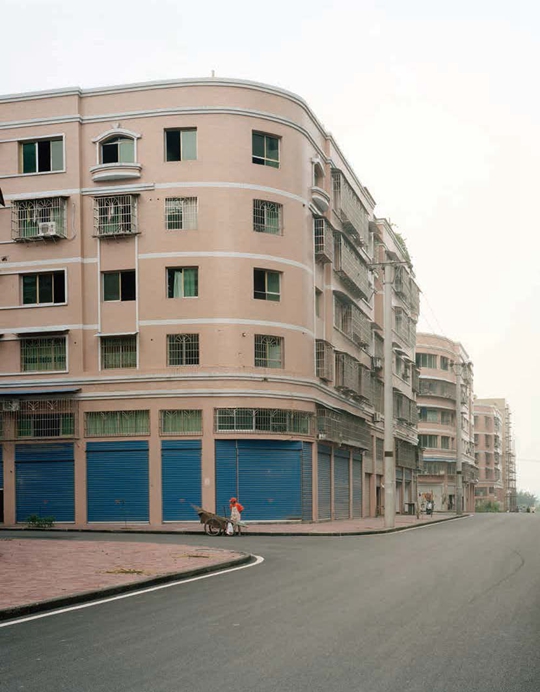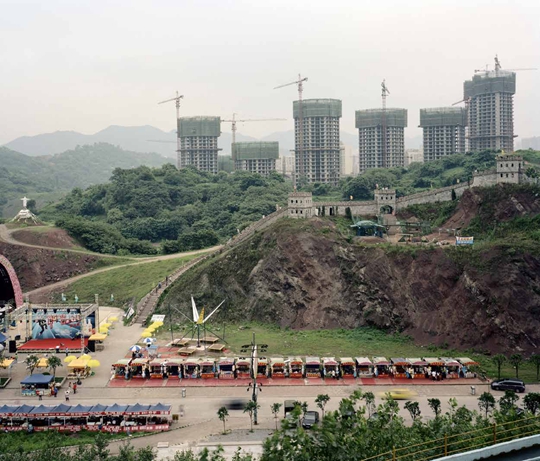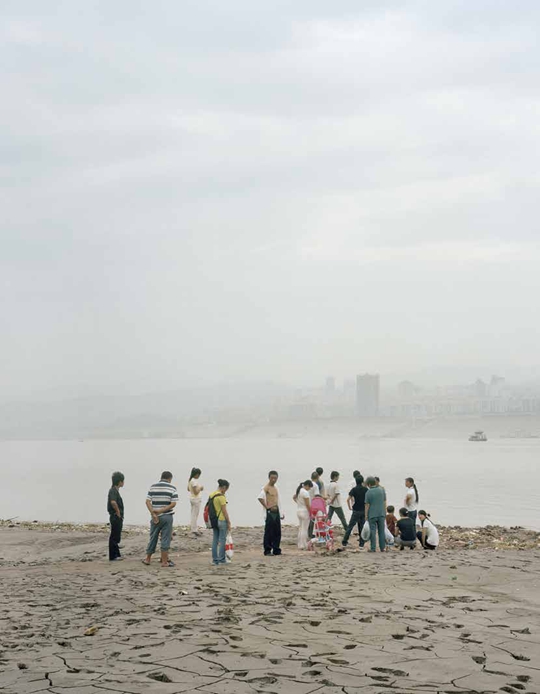Dizzy with success: dalian wanda and the invention of a cliché
| May 17, 2016 | Post In 2016年4月号

“They all look the same,” Europeans used to say about Chinese people; now, it’s what first-tier citizens say about third-tier cities. Whether it is Jixi in Heilongjiang, Dongguan in Guangdong, or Tangshan in Hebei, lieux de memoires associated with critical moments in China’s history have become apparently faceless collections of buildings interchangeable with each other. The most iconic creator of the least iconic structures: Dalian Wanda, the enterprise that has made Wang Jianlin China’s richest man. Wanda is a conceptual framework large enough to touch basically every aspect of Chinese society today: a shift between state power and private power, rapid urbanization, the transformation from citizens to consumers, and the urgent need to shift the basic structure of the means of production.
The study of generic urban typologies has been chic recently, with studies such as Kuba Snopek’s Belyayevo Forever, a proposal to turn a generic Moscow suburb that was home to many of the conceptualists, into a UN heritage site. As a discipline, though, architecture’s orientation toward highly individualistic structures by name-brand architects, such as Ma Yansong’s recent Harbin Opera House, is a massive loss of ambition compared to the modern origins of the discipline, whether globally with Le Corbusier or regionally with Liang Sicheng. The creation of generic prototypes that could be universally realized was a living form of dialectical materialism: dialectical, in the creation of a structure to juxtapose populations with space in a distinctly modern way; materialist, in the strict requirements presented by the project of building mass housing. If Ma Yansong’s MAD or Rem Koolhaas’s OMA follow client briefs or come up with different inspirations of their own, the largely anonymous designers of Wanda’s shopping malls, much like the architects of China’s socialist era, take their briefs from the economy itself. When these architects deviate from the purely functional in nature, as in the facade of Wuhan’s Hanjie Wanda Plaza, Wang makes his dissatisfaction known. The path to Beijing Shijingshan Wanda Plaza might have started with Haussman or Ildefons Cerdà, Marx or Liang Qichao—through the ambition to create a social platform that would put all persons together in material relations of equality; through revolution, mass urbanization, and the shrinking of a vast collective experience of history to our current tiny times. There, in the mix of Japanese restaurants that use too much mayonnaise, Baleno shops, and coffee shops that inexplicably do not serve coffee, is the common life of the people.

What is Wanda Philosophy?
Dialectical materialism is now conducted in an economy that is a war of all against all oriented towards the future. Wanda’s squares are the prototypical public spaces in which a new public discovers itself in representations; dancing, going to the cinema, celebrating life. Wang Jianlin is a son of the soil, a patriarch taking over space evacuated by the state. Wanda Squares are third-tier China’s public space, a space of gathering, of rendezvous, of self-discovery, but they’re private, because Wanda stands as an intermediary holding company that exploits the paucity of public space to erect typologies of gathering regardless of the local setting. The erection of Wanda Squares is the draining of characteristics from space, the integration of the local into the logic of the global economy. Even compared to other real estate developers, Wanda stands out for its devotion to neglected and peripheral areas, and the degree to which it insists on a Chinese sovereignty: it both is and isn’t a part of the trajectory of Chinese architectural thought.
This transition between the world of the past and the present comes from the northeast, of course, and a man who grew up in the Red Army—and today conducts politics by another means. In the 1970s, Mao Zedong famously told Nixon he had only managed to change “a few things near Beijing”; by inventing a financially sustainable model by which Chinese cities can be subjected to moderate improvement rather than radical change, Wang has created real, existing socialism—or something like it—all over the country.
Wanda’s start in revamping Dalian’s marginal areas in the late 1980s already reveals some of the contradictions of a model that was faltering—how could slums exist in a socialist country? Wang Jianlin stepped into a gap caused by history moving so quickly that the population felt weary, creating spaces that are the inverse of the practices of designers like Rem Koolhaas or Zaha Hadid, which superficially allude to socialist typologies or traditional typologies but have no intrinsic similarity. These architects may think that they follow the legacy of Liang Sicheng, “China’s first architect.” But where do generic architectural typologies, structures so commonplace that they barely register as existing, come from? They emerged from the land as if by magic; the congealed labor from anonymous sources emerged from the economy, a term designating the collision of populations, territories, resources, structures.
In China each Wanda Plaza needs to go from concept to completion within two years. Typically, they are rarely found in the city center, but rather on cheaper land outside of the city; turning vacant suburbs into developments then moving on, adding value to the vacant rather than interacting with existing urban space. In the context of cities that are expanding extremely rapidly, Wanda Plazas comprise an essential public space that eschews luxury, a third place aside from housing and workspace. Hong Kong developers tend to go for flashy downtown luxury projects in prime addresses; Wang’s is an empire of peripheries. Even compared to his counterparts Pan Shiyi of SOHO and Wang Shi of Vanke, Wang relentlessly engages with materiality on its own terms. Many of SOHO’s beautiful and memorable projects are not profitable or efficient; they are too obsessed with appearance. Any architect you know the name of is engaged in an architecture of the superstructure, an aesthetic form; Wanda is the architecture of the base, the space of self-labeled petty urbanites. These shopping malls, according to sources involved with the business, are not the main income generators, but rather, like luxury hotels built to sell adjoining serviced apartments, intended to create life and vibrancy where there was none—all for the purpose of selling or renting office space in nearby towers.

The World as Will and Representation
China is facing a very serious economic crisis, and every aspect of society will be touched. In what is called the middle income trap, nations on the periphery get stuck in primary industries such as manufacturing, construction, and real estate, held apart from the representation and abstraction of the industries of the spectacle: fashion, media, entertainment. The global economy is configured around unequal access to the mechanisms of its control—the finance industry. The Chinese stock market has experienced extreme fluctuations and inept attempts on the part of the state to control what is ultimately controlled in London and New York. To truly realize Mao’s project of new democracy and obtain full sovereignty, China’s financial sector must be capable of discovering an autarky more effective than North Korea’s Juche but less subject to imperial domination than Hong Kong, Japan, or South Korea. In fact, the radical proposition of the project of Chinese modernity is to redefine the periphery as central, a project that is replicated in microcosm by Wanda’s real estate development strategy. The financial industry is an attempt to represent the world in its entirety in an abstract pattern language, one that, for Boris Groys, is parallel and antagonistic to the narration of collective experience in the reservoir of images we call contemporary art. This is the logic that has led Wang Jianlin to divest from the real estate market; while it is fair to be skeptical, he claims that, by 2018, two-thirds of Wanda’s income will come from internet businesses, finance, film, entertainment parks, and other industries of representation. The tangible manifestations are his purchases of sports teams and Hollywood production companies, as if he realized one day that all of the things inside Wanda Plaza were poorly done and uninteresting: spectacles and representations are the only palliatives that will allow us to cope with this void.

Gate to a Thousand Deserts, Empty and Cold
Time is passing so quickly; what will we remember of this golden age when it’s finished, when the fast money stops pouring in, when the renovation and new construction finally stop? Even now, as we walk through cities that didn’t exist ten years ago, our experience is mediated by what came before: the refracted memory of collective movements and experiences, of an entire world which has been replaced. Our shared memories are abstract and impossible to capture within any container, architectural, urban, or formal of any kind; the feeling we have when we see a painting is our own, independent of the painting. The fantasy of a collective has structured the Chinese economy since 1949, when it was centrally unified; since then, modern Chinese history could be divided into anticipation of the collective to come and nostalgia for its passage, without ever passing through a true utopian collective moment. Now that it’s over, it’s easy to feel that it was a hallucination.
There will come a moment when China’s economic boom stops; then, as in Japan, we will no longer exist in a constantly shifting spatial continuum, but will be frozen in time. Look around you; it will be like this for a century, whenever the music stops.

